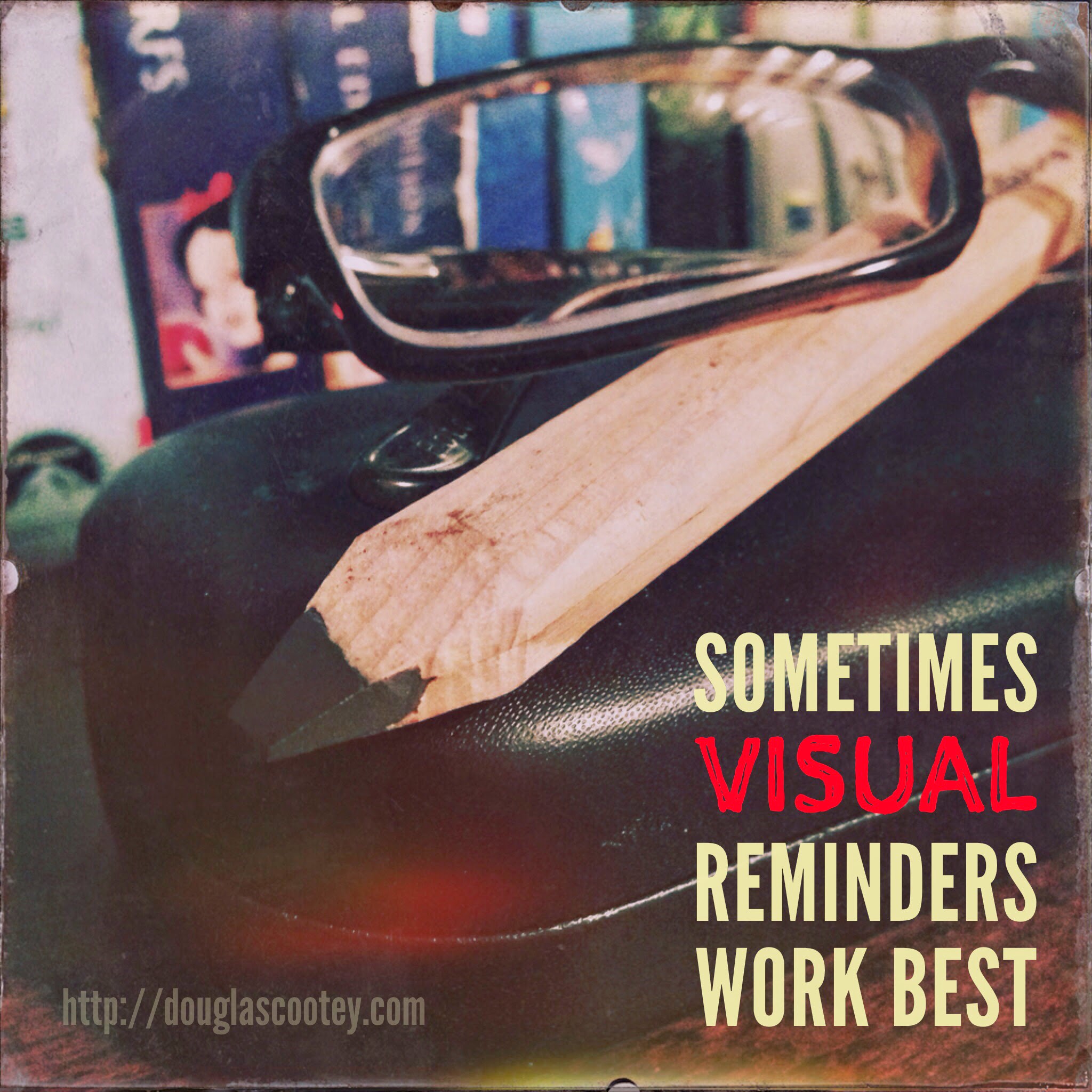ADHD: Visual Reminders
The simplest ToDo list is one item long and stays in your face. [1]

There is one kind of reminder that I always fall back on when sticky notes, calendar apps, todo lists, and alarms fail. It is the visual reminder, and it is as powerful as it is simple.
Perhaps you haven’t noticed, what with all the forgotten bills, lost paperwork, and unfinished projects no longer on your mind, but one of the most notorious downsides of having adult ADHD is being forgetful. I can remind myself to do something every hour of every day and still forget to do it. All I need is a distraction at the wrong moment. That’s why task lists are so helpful for forgetful people. You don’t need to rely on your memory. That is unless you forget to look at the task list. Then you’re in all sorts of trouble again.
Use Your Phone as a Tool Instead of a Distraction!
I have the same problem. Short of stapling something to my forehead, sometimes I can’t rely on myself to remember to pick up some laundry detergent, buy more milk, et cetera. That is why if I want to remember to bring something with me or make sure I buy something when I’m out and about, there is nothing more helpful than sticking the item that needs my attention in front of the door.
Is it time to return the library books? Stick them in a bag and lean the bag against the front door. I’ll have to practically step on them in order to get out of my apartment. Do I need to deliver some important papers? Get a magnet and fix the papers at eye level right above the door handle. They’ll smack me in the face when I open the door. When I forget to take steps like this, I end up leaving important papers at home or forgetting to drop by the store over and over again.
When I first started using this visual reminder method as a coping strategy, it was mostly to help myself not leave things behind as I’ve detailed above. However, there was one time when I was frustrated with myself because I had missed the goal to draw seven days in a row. I had the time. I wasn’t doing anything more important the previous night. I just forgot to do it even though I had remembered to draw every night before. My solution was to stick my art pencil into my eyeglasses when I went to bed. I remember muttering to myself, “Let’s see you forget to draw now.” Sure enough, when I woke the next morning, there was the art pencil in the way of my glasses. I moved them aside, put my eyeglasses on, and got busy drawing. The trick worked like a charm. That’s when I began to realize this visual reminder technique could be expanded upon.
Use Your Senses
This may all sound simplistic, but the trick to the trick is to keep things visual, but also tactile. For example, what about just grabbing the empty shampoo bottle and throwing it in your bag? Unfortunately, you’ll probably remember about it long after you passed the store. That was my experience. If I grabbed the shampoo bottle, I needed to make sure it was on the front seat with me. Then I could see it move around. I could hear it next to me. I could feel it as I moved it back from the edge of the seat. The visual reminder needs to be something that makes its presence felt so that it stays in the front of your mind.
In fact, as useful as this technique can be, there are some limitations and downsides. We’ve already discussed how useless a visual reminder is that has been hidden away. Visual reminders are also not very useful for projects. I can stick a project at the foot of my bed or in a doorway, and I’ll adapt and learn to walk around it. Projects require a different approach because they aren’t quickly dealt with. This reminder tip is best for simple, one step tasks:
- Bring out the trash.
- Get the prescription refilled.
- Drop off the paperwork.
- Mail the letter.
It is also important to remember that if you live with somebody, this visual reminder technique may drive them bonkers. An empty bottle or a thin stack of papers isn’t going to annoy people much, but if you start piling multiple projects by the door, all you’ll achieve is creating a new place for clutter.
I used to leave the trash on the outside doorstep so that I’d see it when I left the apartment, but my ex-wife left the apartment first and grew tired of tripping over the trash on her way to work. She was also worried about what the neighbors thought. I had to change that reminder ploy out of consideration for her. Frankly, your roommates may not appreciate your receipts pile having a new home in the middle of the living room. Clear this technique with the people with whom you reside, and try to use it for items that are quick to resolve. If you don’t take care of the item immediately, the visual reminder becomes visual noise, which you can stop seeing even after a short while.
You’ll find that if used sparingly—and attended to quickly—the lone item out of place will catch your eye every time you make your mad dash out the door. Used in tandem with other reminder techniques, such as GPS aware reminders on your your phone, the visual reminder will give you the nudge you’d need to remember the things you typically forget.
-
An earlier version of this article was originally published on 23 April 2014. ↩
